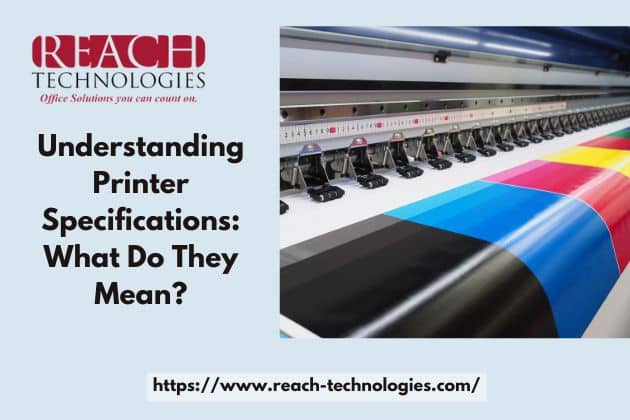When shopping for a printer, you may come across a wide range of common printer specifications, each detailing different aspects of the device. Understanding these specifications is crucial in making an informed purchase decision. In this article, we will demystify printer specifications and explain what they mean, helping you navigate through the technical jargon and choose a printer that suits your needs.
Common Printer Specifications
Print Speed
Print speed indicates how many pages a printer can produce per minute (PPM). It is typically specified for both monochrome (black and white) and color prints. A higher PPM value indicates a faster printing speed, which is beneficial for high-volume printing environments.
Print Resolution
Print resolution refers to the level of detail and sharpness in the printed output. It is measured in dots per inch (DPI). Higher DPI values indicate a higher level of detail. For most general printing needs, a resolution of 600 DPI is sufficient, while photo printing may require a higher resolution.
Connectivity Options
Printer specifications often include information about connectivity options. Common connectivity options include USB, Ethernet, and Wi-Fi. USB provides a direct connection to a computer, Ethernet allows network printing, and Wi-Fi enables wireless printing from multiple devices.
Paper Handling
Paper handling specifications describe the printer’s capacity to handle different paper sizes and types. This includes information about paper tray capacities, supported paper sizes (such as letter, legal, or A4), and compatibility with specialty media like envelopes or cardstock. Understanding paper handling specifications ensures the printer meets your specific printing needs.
Duplex Printing
Duplex printing, also known as double-sided printing, allows the printer to automatically print on both sides of the paper. This feature saves paper and is useful for creating professional-looking documents or presentations.
Ink/Toner Cartridge Yield
Printer specifications often mention the expected yield of ink or toner cartridges. This indicates the approximate number of pages the cartridge can print before needing replacement. It helps estimate ongoing printing costs and plan for cartridge replacements.
Monthly Duty Cycle
The monthly duty cycle specifies the maximum number of pages a printer can handle in a month without experiencing performance issues. It is important to choose a printer with a duty cycle that aligns with your expected print volume to ensure long-term reliability.
Multifunction Capability
Some printers have multifunction capabilities, combining printing, scanning, copying, and sometimes faxing functionalities into a single device. The specifications will indicate the supported functions and features of the printer.
Energy Efficiency
Printer specifications may include energy efficiency ratings, such as Energy Star certification. Energy-efficient printers consume less power during operation, reducing electricity costs and environmental impact.
Conclusion
Understanding printer specifications is essential for making an informed purchasing decision. By familiarizing yourself with print speed, print resolution, connectivity options, paper handling, duplex printing, ink/toner cartridge yield, monthly duty cycle, multifunction capabilities, and energy efficiency, you can assess whether a printer meets your specific requirements. Remember to consider your intended use, print volume, and desired features when evaluating printer specifications. Armed with this knowledge, you can confidently choose a printer that suits your needs and ensures optimal printing performance.

